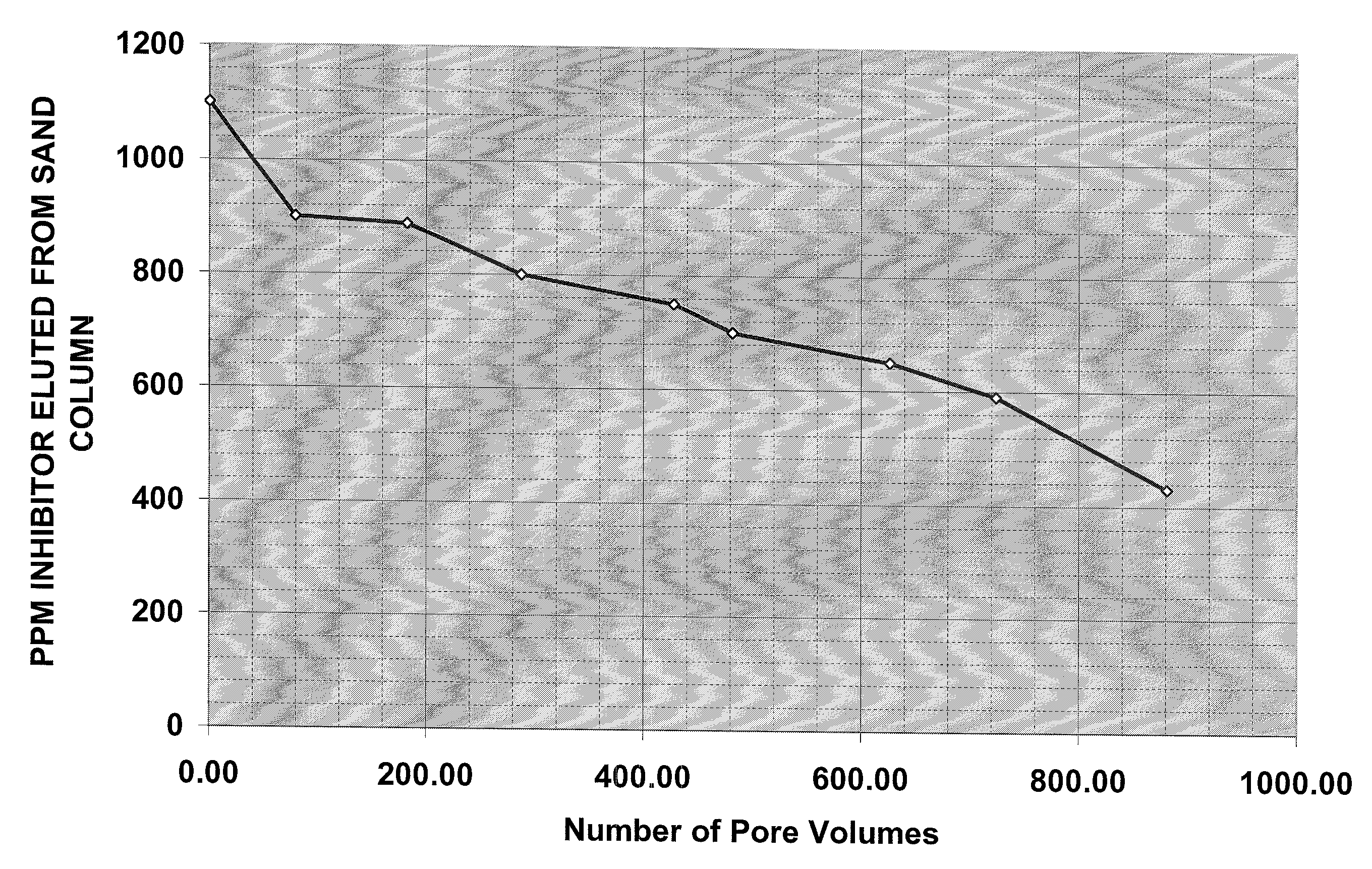Method of Minimizing or Reducing Salt Deposits By Use of a Fluid Containing a Fructan and Derivatives Thereof
a technology of fructan and salt, which is applied in the direction of sealing/packing, wellbore/well accessories, other domestic objects, etc., can solve the problems of increasing the solubility of salt in solution, high cost of treatment, and inconvenient use, so as to prolong the effect of salt inhibitor over a long time period, reduce the amount of crystallized salt, and facilitate the effect of removal
- Summary
- Abstract
- Description
- Claims
- Application Information
AI Technical Summary
Benefits of technology
Problems solved by technology
Method used
Image
Examples
examples
[0036]The following products were used in the Examples as salt inhibitors:
[0037]SPE 15625, a 25% active solution of the sodium salt of carboxymethyl inulin having a DS of 2.5±0.20, a product of Thermophos International, BV.;
[0038]Dequest PB 11625, a 40% active solution of the sodium salt of carboxymethyl inulin, having a DS of 1.25±0.04, a product of Thermophos International, BV.
examples 1-16
[0039]50% vol / vol solutions of SPE 15625 and Dequest PB 11625 were prepared in water. A brine having a saturation level of 1.05 was prepared by mixing a first saturated brine solution containing sodium chloride with a second saturated brine solution containing sodium chloride and calcium chloride. The first saturated brine solution contained 50.0 g water and 18.65 g sodium chloride. The second saturated brine solution contained 21.92 g water, 2.0 g sodium chloride and 12.58 g calcium chloride (CaCl2.2H2O) The tests were run at 85° C. according to a procedure outlined by D. M. Frigo et al, SPE 60191.
[0040]The salt inhibitors were then completely dissolved in hot, deionized water and maintained at 85° C. An amount of inhibitor was then added to a glass French square bottle. The brine was then quickly added. The bottle was sealed and the fluid was then mixed. The bottle was then placed in an 85° C. oven (or water bath) for one hour to assure that any suspended material was re-dissolved...
example 17
[0042]About 800 g of 10 / 50 mesh diatomaceous earth (Celite MP-79) adsorbent was added into a mixing bowl and was then treated with PB 11625 until the diatomaceous earth was almost saturated with the liquid. The mixture was heated at 240° F. until the product was dry. A second amount of liquid was added to result in a saturated product and again dried by heating to 240° F. The resulting composite contained 25 weight percent active inhibitor and 75 weight percent diatomaceous earth.
[0043]Packed column studies were conducted on the composite using a supersaturated sodium chloride brine. The column was packed with 2% by weight of the composite and 98 weight percent Ottawa 20 / 40 sand. A pressure capable column was fitted with heat tape and a temperature controller, and the saturated sodium chloride brine was pumped under a pressure from about 2,000 to about 2,500 psi at 185° F. The volume of effluent was measured, and periodic samples were taken to determine if the effectiveness of the c...
PUM
| Property | Measurement | Unit |
|---|---|---|
| Percent by volume | aaaaa | aaaaa |
| Percent by volume | aaaaa | aaaaa |
| Specific surface area | aaaaa | aaaaa |
Abstract
Description
Claims
Application Information
 Login to View More
Login to View More - R&D
- Intellectual Property
- Life Sciences
- Materials
- Tech Scout
- Unparalleled Data Quality
- Higher Quality Content
- 60% Fewer Hallucinations
Browse by: Latest US Patents, China's latest patents, Technical Efficacy Thesaurus, Application Domain, Technology Topic, Popular Technical Reports.
© 2025 PatSnap. All rights reserved.Legal|Privacy policy|Modern Slavery Act Transparency Statement|Sitemap|About US| Contact US: help@patsnap.com


